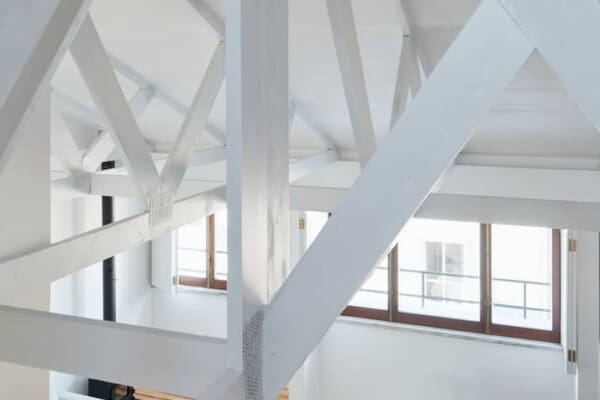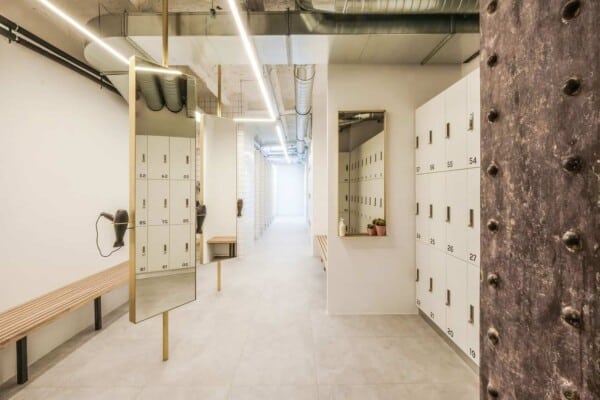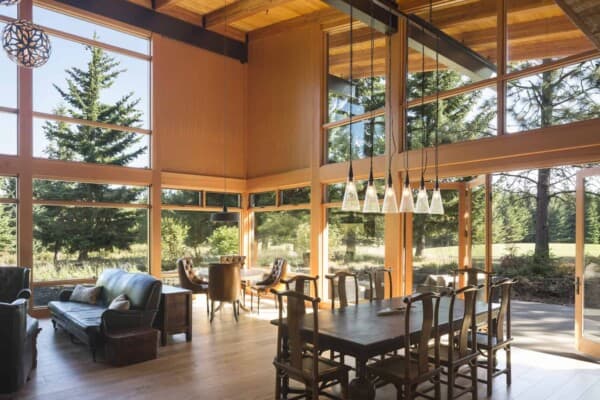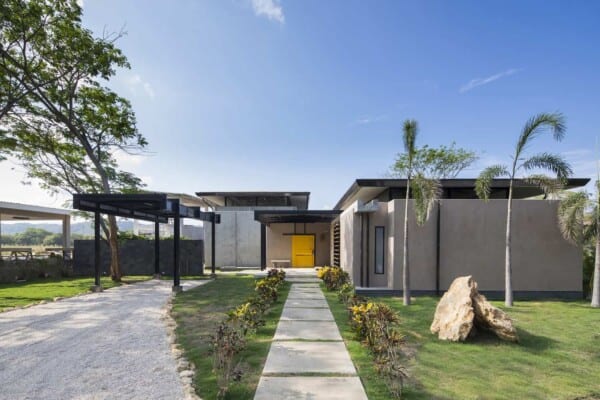New York City-based studio Bromley Caldari Architects completed the A-Frame Rethink project in 2013.
They completely transformed the interior of this 1960s A-frame beach home located on Fire Island in the state of New York, USA.
A-Frame Rethink by Bromley Caldari Architects:
“In a complete renovation of a bayside A-frame house on Fire Island, Bromley Caldari turned a seasoned beach rental into a sleek hideout. Rethinking the iconic 1960s A-frame form, architects R. Scott Bromley and Jerry Caldari broke through the envelope of the building to weave a sculptural staircase through the airy three-story structure.
A typical A-frame, the house had a spiral staircase splitting down the middle, four dark and cramped bedrooms, a leaky roof, and a cracked pile foundation – not the pristine vacation home that is so often associated with Fire Island Pines. The poolside sunsets over the Great South Bay were not to be discounted and the potential was there, yet blocking the fantastic view and occupying the heart of the house was the old six-foot diameter steel spiral staircase. The clients wanted the removal of the staircase and were willing to sacrifice a bedroom or two to make it happen.
With the lot coverage at its limit, Bromley Caldari took advantage of a local law that permits bay windows to project a maximum of two feet out from the building envelope. The new staircase would tuck into two large bay windows staggered at different elevations on each side of the house with a catwalk balcony off of the master bedroom to connect the two sides. Weaving from one side to the other as you ascend the three floors, the staircase offers views of the bay framed at each elevation.
On the main level, a double-height living/dining room stretches the length of the window-clad north façade. The open kitchen and house utilities run along the south side. The master bedroom suite features full-height glass sliding doors that take advantage of the view. Although the doors stay mostly open, when guests are present and privacy is required, the sliding glass doors fog up at the flick of a switch.
Under the peak on the third level is a quiet second bedroom and den (that acts as the third bedroom when needed). The two rooms are connected by a walk-through bathroom – a glass shower enclosure on one side and a glass- enclosed powder room on the other. Pocket doors at each end allow for privacy.”
Photos courtesy of Bromley Caldari Architects




























































Sometimes architects come out with outlandish, bombastic designs mainly to attract attention. This is a case in point. A house ought to be a home for the owner. The owner ought to feel happy, comfortable, raise a family in the house. With this design the architect may win accolades, couple of awards. That’s it. I wouldn’t be happy living in this house, for sure.
Just because that’s how you feel, doesn’t mean that’s how the home owner/client would feel. I have been in the process of planning a home very similar to this for myself – and would feel comfortable and happy in it – sure it’s not built for a family due to lack of bedrooms, that was clearly not part of the clients needs. Personally I thought the house came across as quite humble, hiding most of the glazing from the street side facade.
I would very much like to have seen pre-renovation pictures with this article.